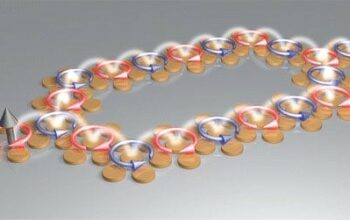As the global scientific community rapidly advances in the field of particle physics, the attention of physicists has become increasingly fixated on the advancements emerging from institutions beyond the traditional powerhouses like CERN. One of the most intriguing developments in this realm is the rise of Chinese particle colliders, which have begun to captivate physicists with unexpected results and the promise of new discoveries. But how do these collider advancements defy expectations, and could they potentially reshape our understanding of fundamental particles and the forces that govern them?
The Chinese particle physics program, particularly represented by colliders such as the Beijing Electron-Positron Collider (BEPC) and the future Circular Electron Positron Collider (CEPC), has become a focal point for international collaboration and innovation. These facilities not only aim to delve into the intricacies of particle interactions but also propose tantalizing solutions to longstanding enigmas in the physics community. The mission of these colliders is to generate precise data about particles at unprecedented energy levels, which may lead to the unearthing of new particles or phenomena that challenge the existing paradigms of physics.
Fundamentally, the endeavor of colliding particles at high energies revolves around the search for the elusive Higgs boson and other exotic states predicted by theories beyond the Standard Model, such as supersymmetry and dark matter candidates. High-energy collisions serve as a vital means of unlocking the underlying structure of matter and understanding the forces dictating particle interactions. As these collisions occur, the conditions mirror those found just after the Big Bang, potentially revealing insights into the very fabric of the universe.
However, what if these intense collisions yield results that contradict prevailing theories? The prospect of falsifiable hypotheses opens the doors to revolutionary ideas and innovative research avenues. Take, for example, the unexpected production of new particles that possess unique properties not accounted for in the Standard Model. Such findings might compel physicists to reconsider the assumptions that have guided theoretical frameworks for decades.
The CEPC is poised to play a crucial role in this exploration. With its ambitious plans to surpass the capabilities of existing colliders, the CEPC aims to produce copious amounts of Higgs bosons and to refine measurements of their properties. More importantly, it will enable researchers to investigate rare processes that could have significant implications for our understanding of particle interactions. These rare decays offer a glimpse into phenomena that may ultimately bridge the gap between known physics and unknown realms, a tantalizing frontier for the imaginative physicist.
Moreover, the potential discovery of particles that carry fractional charges or exhibit unusual spins may revisit questions of symmetry and conservation laws that have long governed particle physics. Such particles could lead to the formulation of new theories that extend beyond the current understanding, motivating a re-evaluation of core principles that physicists have relied upon. To comprehend the full impact of these anticipated discoveries, one must be intellectually prepared to navigate the complexities of theoretical revisions.
Meanwhile, the international collaboration that characterizes Chinese collider projects is indicative of the evolving landscape of global scientific inquiry. By inviting participation from leading physicists worldwide, China underscores a commitment to cultivating diverse perspectives and fostering innovative ideas. The Chinese approach is not merely about national prestige but is a strategy to accelerate the momentum of discovery within a collaborative framework. Hence, one must ponder whether such collaborations will give rise to a new era of particle physics that is collaborative rather than compartmentalized.
Yet, the interplay between collaboration and competition is inherently delicate. As Chinese facilities attract global talent, the question emerges: will this influx of collaboration inspire greater discoveries, or will it cultivate an environment of rivalry amongst nations racing to claim breakthroughs? The competitive aspect of scientific research has historically driven innovation, but it also elicits concerns of ethical considerations in scientific discourse and communication. There lies a challenge here; balancing the thirst for discovery with the moral obligations of transparency and accessibility in research findings!
The impact of the Chinese collider projects extends beyond the particles themselves. Their development boosts technological advancements in detectors, data processing, and simulation techniques. The synergistic relationship between fundamental physics and technological progress signifies that advancements in one domain often spur innovations in another. As researchers tackle complex scientific questions, the tools developed could spill over into other fields, such as materials science, medicine, and even information technology.
In summary, the emergence of Chinese colliders as significant players in the field of particle physics poses a playful question: could these facilities be the key that unlocks a new understanding of the universe? As physicists gear up for a future filled with potential surprises, the challenges—both scientific and ethical—remain substantial. The intricate dance of collaboration and competition may yield critical advancements, but it also necessitates careful navigation through the potential pitfalls of scientific discourse. Ultimately, as the quest for knowledge continues, it is the shared curiosity of the scientific community that will determine whether these collider charms become pivotal to our cosmic understanding or merely a footnote in the annals of physics. Each collider event sparks not only scientific curiosity but also profound implications for humanity’s grasp of reality itself.












